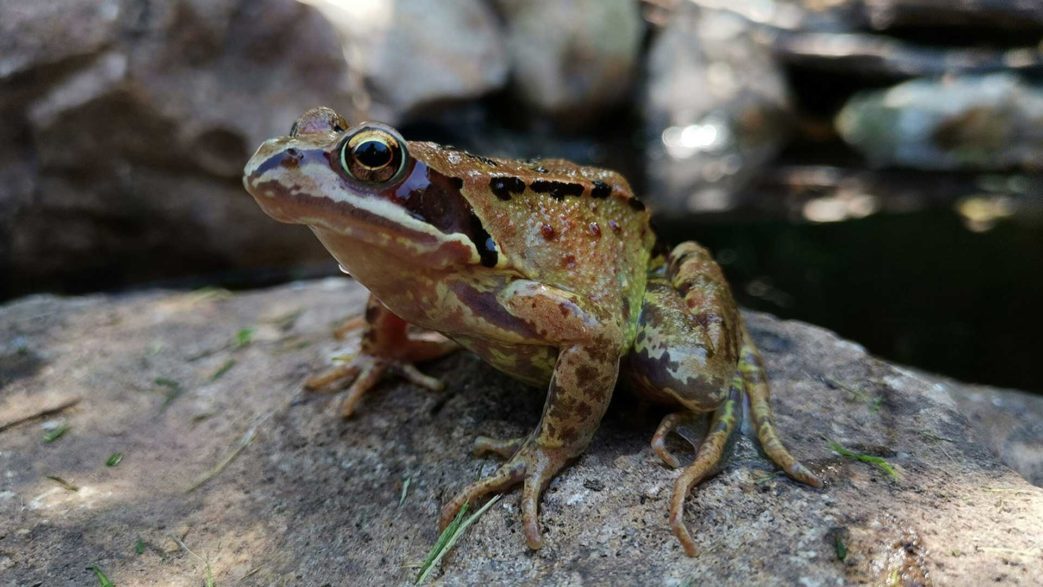Our mums always told us beauty is in the eye of the beholder, so we will let you judge which is which from our top five list of creatures that should start emerging from your pond in the coming weeks.
- Frogs and toads: so these chaps have made several appearances when we’ve been out and about before the lockdown. They are definitely some of the most recognisable of our pond inhabitants and one of our favourites. Make sure to listen closely and see if you can hear them calling to each other.
- Newts: much rarer to see than their hoppy cousins, newts have started to emerge. We’ve had several encounters with them over the past few weeks and every time we are as excited as the last. We have three species of newt in the UK; we can name them all, can you?
- Spawn and tadpoles: everyone’s pond is slightly different; some will see spawn just having been laid, others will see free swimming tadpoles. “How do you tell the difference between newt, frog or toad spawn?” we hear you ask. Well, we’ve got you covered. Frog spawn is laid in gelatinous clumps, toad spawn is laid in long strings and newt spawn is laid as individual eggs and is generally much harder to find. “But what about the tadpoles?” I hear you cry, it’s ok; we can tell you. Toads are the biggest with almost solid black colouration, frogs are more slender with a lighter colouration and gold flecks, lastly newts: these are normally the smallest once hatched and have a small set of frills (these are their gills) behind their head.
- Water beetles: there are around 350 species of water beetle in the UK and they are mostly overlooked. They are a joy to watch as they propel themselves around your pond in search of their lunch. Remember most of these little creatures can fly and can be some of the first to inhabit a newly constructed pond.
- Dragon and damselfly larvae: these are some of the weirdest and creepiest looking inhabitants of a pond. They are voracious predators in your underwater ecosystem and studies have shown that they are some of the most brutal hunters in the whole of the animal kingdom. They spend most of their lives in this larval stage which can be as long as up to five years!
Remember there are far more bugs and beasties to see and discover under the water. Make sure to share them with us, as we love to see what’s going on in all your ecosystems. You can share them with us via Facebook, Instagram or even email.


